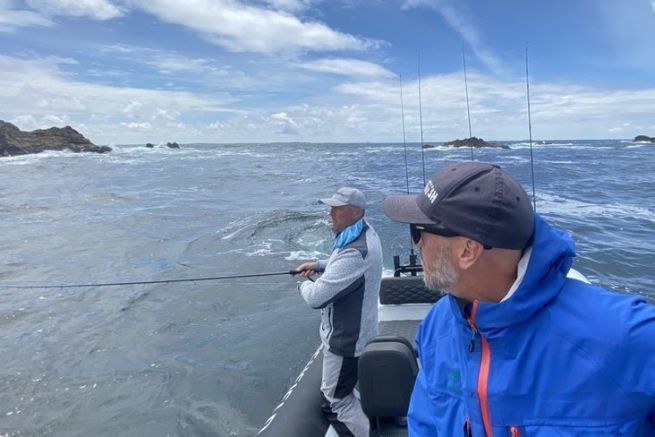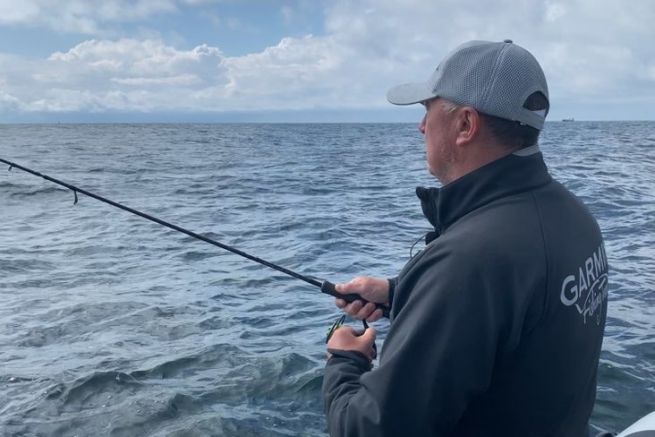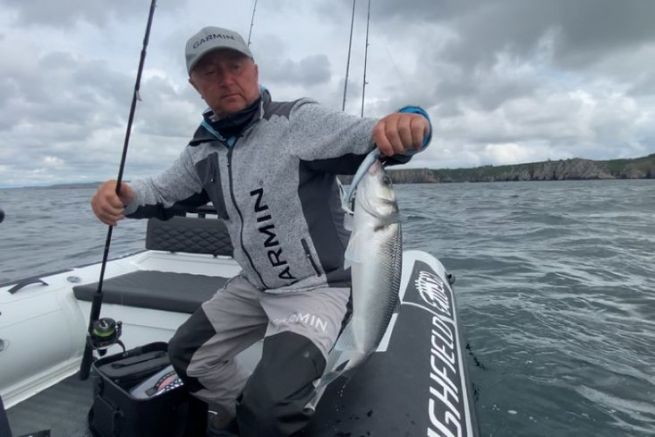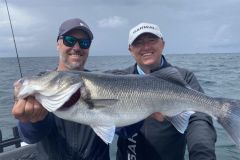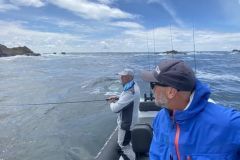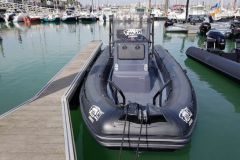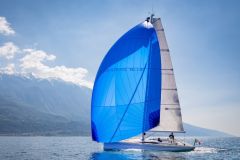To start fishing from a boat, we went to sea with Matthieu Guénnal, creator of Fiiish lures and Fred Lavion, fishing specialist at Garmin. Both of them enthusiastically shared their know-how, not being stingy with advice on how to enjoy a great day's fishing.
Scratch fishing, with the lure coming into contact with the bottom is recommended for beginners because it's easy to track the position of the lure relative to the bottom. For traction fishing, we're going to move the lure in open water. It is therefore necessary to choose the right weight of its leaded head and animate its lure without it touching the bottom.
Traction fishing was widely used a few years ago in competition. At that time it gave the best results, because the lures were designed for this purpose. Today, it competes with other types of animation.
The Crazy Paddle Tail, the fetish lure of traction fishing
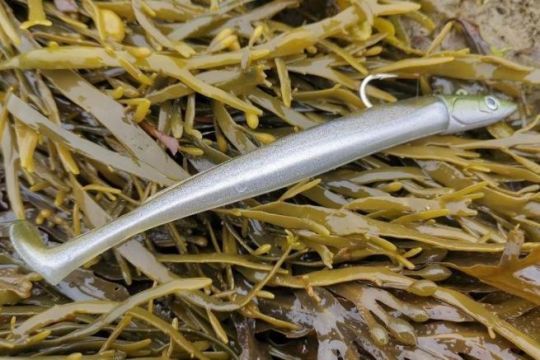
For traction fishing, we use a dynamic lure that slaps. A lure that makes noise and attracts predators from afar when accelerated. For this type of fishing, Fiiish has designed the Crazy Paddle Tail, a lure with a very supple body that imitates a sand lance, the favourite meal of sea bass.
This lure comes alive with big pulls, during which the lure vibrates. It "slaps" and you can feel it in the line, it makes noise. Fishing is practiced in the whole layer of water. In areas with little water, bass can easily come up to the surface to get the lure. We also work enough off the bottom so that the lure is more visible. Indeed, a lure on the bottom is hidden between algae and rocks and is less visible than a lure in open water and close to the surface.
Pull fishing is used for prospecting, to see if the fish are active in the area. The lure that swims in the open water, clearly visible, will irritate the fish in the area. Especially if it's large, quite wide, not just 30 m between two rock heads, but rather a 300 m corridor. The lure by its noise and its visibility calls the fish from far away.
Traction movement
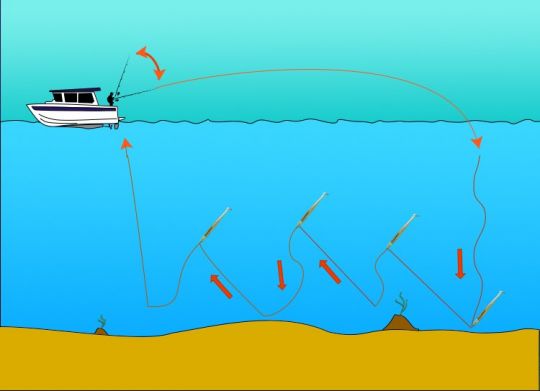
The fisherman casts without having to go to the bottom, we stay high in the water. So as soon as we cast and the lure touches the surface, we start animations: a pull, we retrieve the line, a pull... The time of retrieval of the line creates a pause during which the lure sinks slowly. And we start again.
The lure is fished on the pull phase, because it is noisy, it vibrates, and excites the fish. But the descent phase presents a sick fish, which rests after an effort. This often triggers hits, which is why you should always keep your line taut.
Crooked lure in kelp
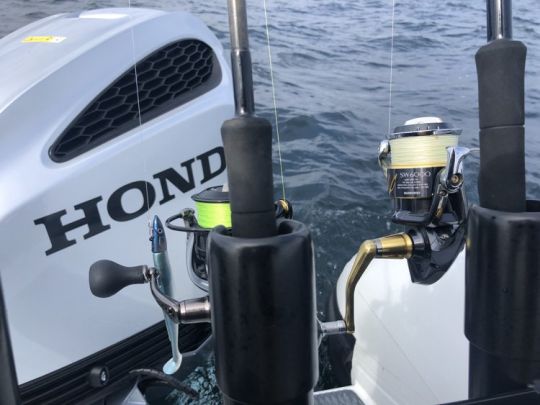
Unlike the Black Minnow whose Texan hook is hidden in the body of the lure, the Crazy Paddle Tail has a hook on the top of its body. Sometimes this one can bite into seaweed, kelp.
When you feel the tops of the algae, it's best to have the reel brake on. So as soon as you feel the top of the algae, when the lure is not yet stung in, you can jerk the reel to release it. With luck, it will come free.
If you don't have the power when you pull (brake a little loose), the lure gets stuck in the algae. There are techniques to avoid breaking, but the simplest is to take the helm of the boat and come back with it until you are above the lure (if possible, if there is enough water...), or even going beyond the area where the lure is launched to pull it "upside down". With luck, it can be unhooked..


